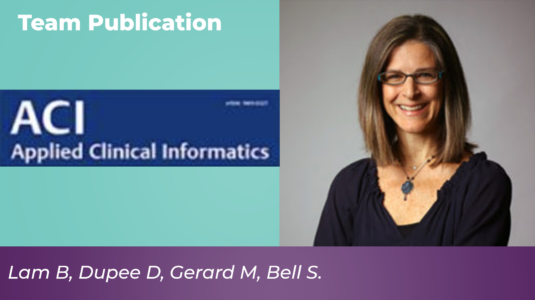Most note-writing guides to date have focused on the experience of clinicians. Here, we build on these tips by integrating patient perspectives related to note-reading.
Gerard, Macda
A patient and family reporting system for perceived ambulatory note mistakes: experience at 3 U.S. healthcare centers
Partnering with patients and families to obtain reports on inaccuracies in visit notes may contribute to safer care. Mechanisms to encourage greater use of patient and family reporting systems are needed.
OpenNotes After 7 Years: Patient Experiences With Ongoing Access to Their Clinicians’ Outpatient Visit Notes
Following a 2010-2011 pilot intervention in which a limited sample of primary care doctors offered their patients secure Web-based portal access to their office visit notes, the participating sites expanded OpenNotes to nearly all clinicians in primary care, medical, and surgical specialty practices.
The Importance of Visit Notes on Patient Portals for Engaging Less Educated or Nonwhite Patients: Survey Study
Less educated and nonwhite patients using the portal each assigned higher importance to reading notes for several health behaviors than highly educated and white patients, and may find transparent notes especially valuable for understanding their health and engaging in their care. Facilitating access to notes may improve engagement in health care for some vulnerable populations who have historically been more challenging to reach.
Tackling Ambulatory Safety Risks Through Patient Engagement: What 10,000 Patients and Families Say About Safety-Related Knowledge, Behaviors, and Attitudes After Reading Visit Notes
Background: Ambulatory safety risks including delayed diagnoses or missed abnormal test results are difficult for clinicians to see, because they often occur in the space between visits. Experts advocate greater patient engagement to improve safety, but strategies are limited. Patient access to clinical notes (“OpenNotes”) may help close the safety gap between visits.
Methods: We surveyed patients and families who logged on to the patient portal and had at least one ambulatory note available in the past 12 months at two academic hospitals during June to September 2016, focusing on patient-reported effects of OpenNotes on safety knowledge, behaviors, and attitudes.
Empowering informal caregivers with health information: OpenNotes as a safety strategy
Patients frequently depend on informal caregivers (e.g., family, friends, or paid workers) to assist with various aspects of medical care, such as medication administration and travel to medical appointments. OpenNotes seeks to share clinicians’ notes with patients through patient portals. Although patients frequently grant portal access to caregivers, the impact of this improved access to health information on the safety of care provided by caregivers remains unknown. Researchers sent a survey to 24,722 patients participating in OpenNotes who had at least one available visit note during the study period. The surveys were sent through the patient portal. Out of the 7058 surveys returned, 150 respondents self-identified as caregivers. Analysis of survey data revealed that access to patient notes enhanced caregiver understanding of recommended medical care including tests and referrals, reminded them about necessary testing, helped them understand results, reminded them about appointments, and improved caregiver ability to assist patients with medications. An Annual Perspective discussed the potential of health information technology to improve patient and caregiver engagement in safety.
Patients Contributing to Their Doctors’ Notes: Insights From Expert Interviews
Background: In a rapidly expanding practice directed toward improved communication, patient engagement, and patient safety, clinicians are increasingly inviting patients to read office visit notes on secure electronic portals. Reports from doctors and patients participating in a pilot study are strongly positive (1). However, although patient-reported outcomes indicate that reading notes is valuable, it is primarily a passive activity. As a next step, inviting patients and their families to contribute to their notes may further patient engagement and offload work from beleaguered doctors.
Objective: To solicit ideas from experts about the concept of OurNotes, an intervention in which patients and families co-produce medical notes with clinicians.
What patients value about reading visit notes: a qualitative inquiry of patient experiences with their health information
Background: Patients are increasingly asking for their health data. Yet, little is known about what motivates patients to engage with the electronic health record (EHR). Furthermore, quality-focused mechanisms for patients to comment about their records are lacking.
Objective: We aimed to learn more about patient experiences with reading and providing feedback on their visit notes.
Methods: We developed a patient feedback tool linked to OpenNotes as part of a pilot quality improvement initiative focused on patient engagement. Patients who had appointments with members of 2 primary care teams piloting the program between August 2014-2015 were eligible to participate. We asked patients what they liked about reading notes and about using a feedback tool and analyzed all patient reports submitted during the pilot period. Two researchers coded the qualitative responses (κ=.74).
A patient feedback reporting tool for OpenNotes: Implications for patient-clinician safety and quality partnerships
Patients and care partners reported potential safety concerns in about one-quarter of reports, often resulting in a change to the record or care. Early data from an OpenNotes patient reporting tool may help engage patients as safety partners without apparent negative consequences for clinician workflow or patient-clinician relationships.




